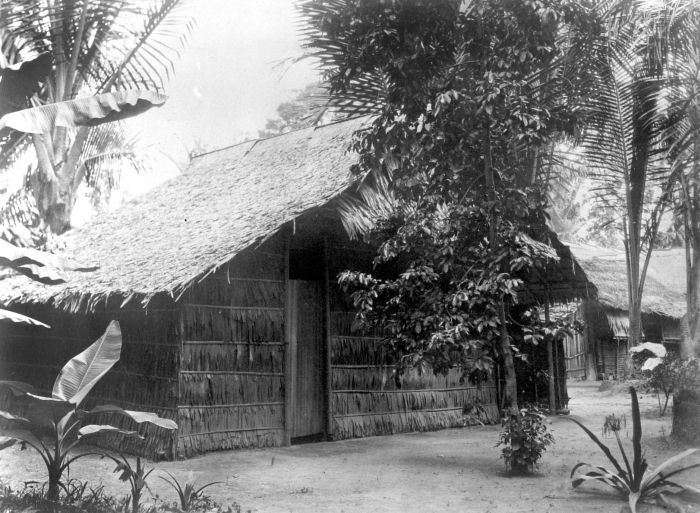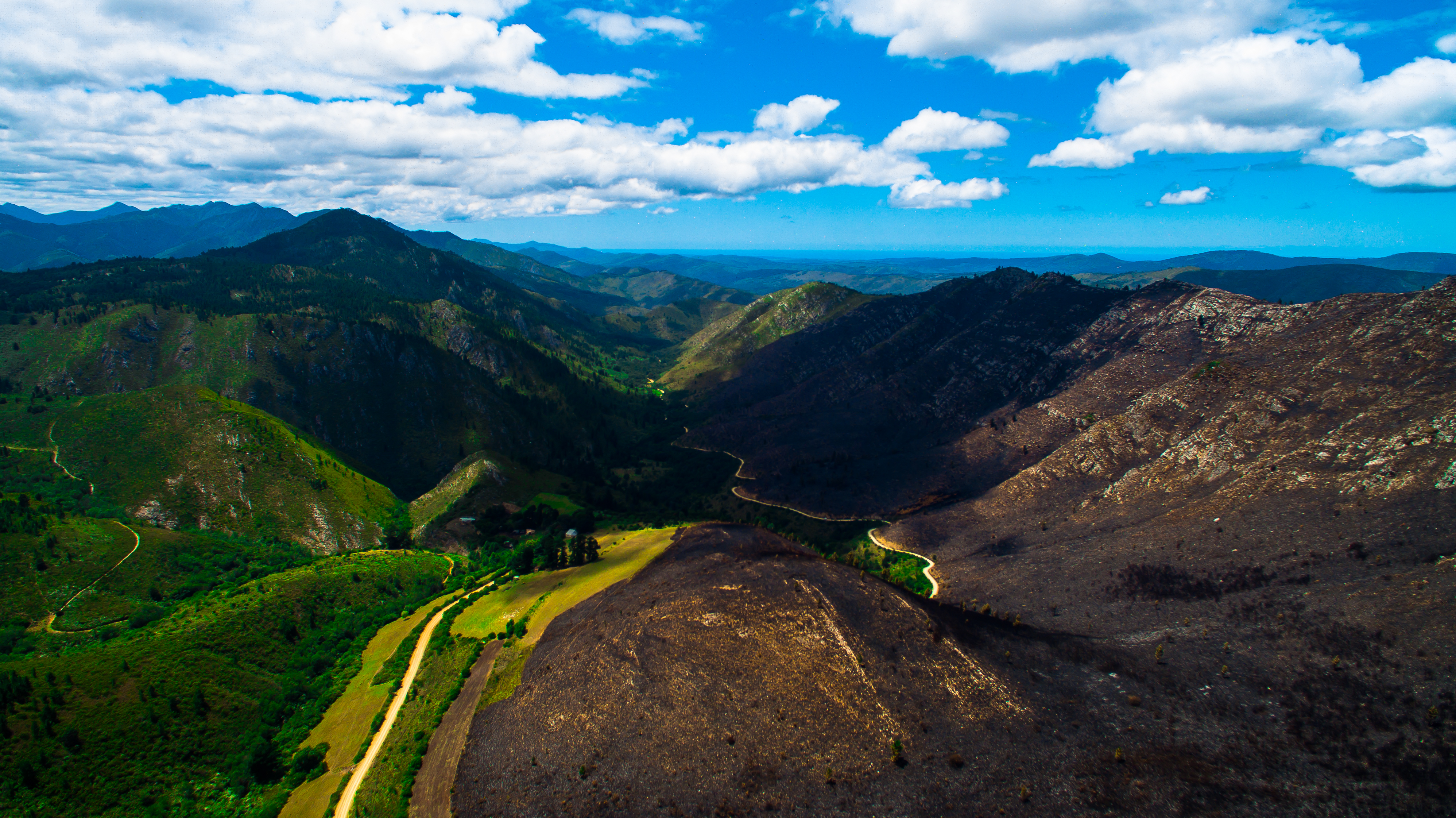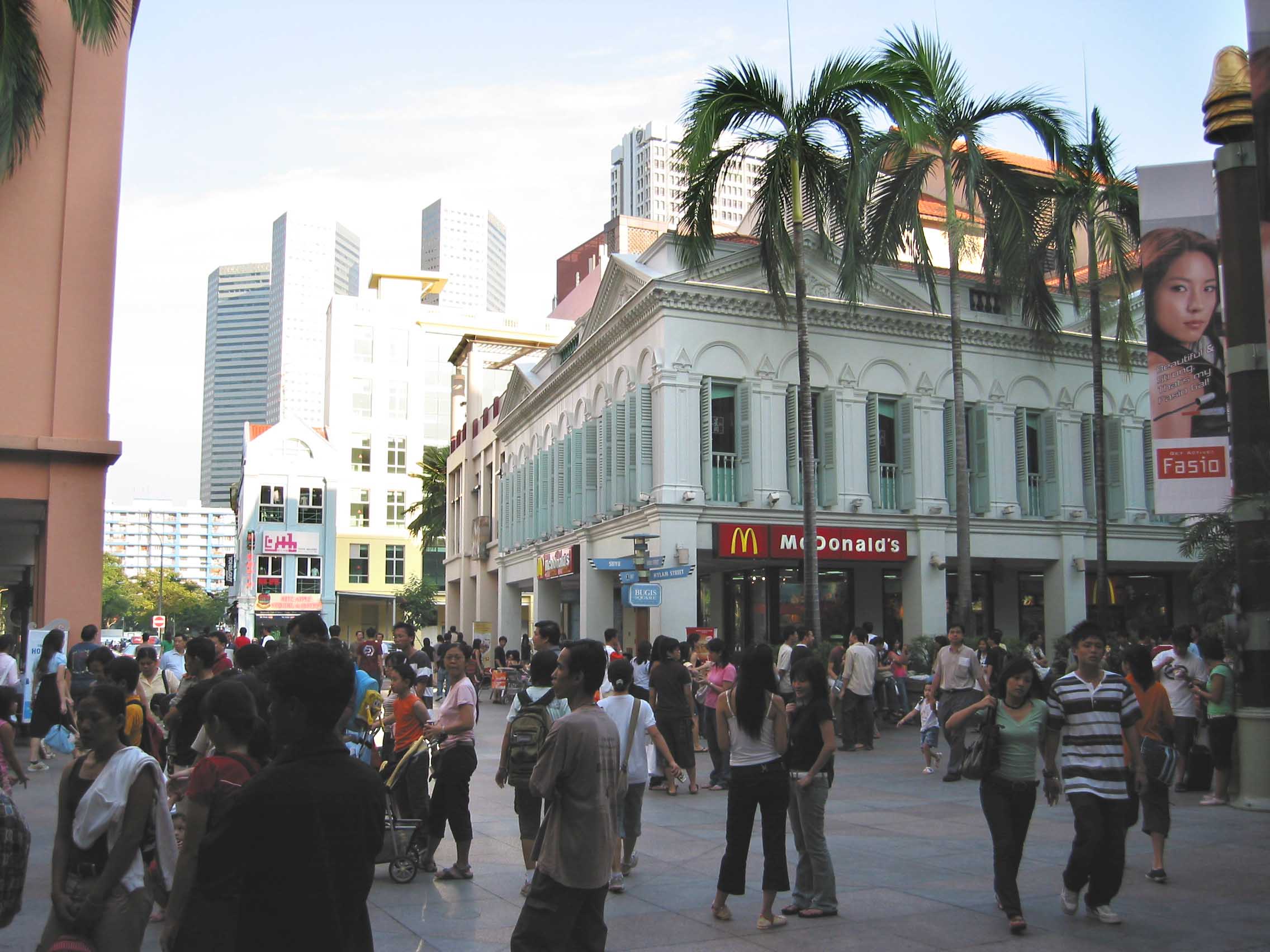|
Bukit Ho Swee Fire
The Bukit Ho Swee fire was a conflagration that broke out in the squatter settlement of Bukit Ho Swee, Singapore on 25 May 1961. This fire resulted in 4 deaths and injured another 54. It also destroyed more than 2,800 houses around the Bukit Ho Swee area, leaving around 16,000 people homeless. The cause of this conflagration was never established. The Bukit Ho Swee fire was the biggest outbreak of fire in Singapore's history. The fire was a pivotal point in Singapore's contemporary history. The scale of the destruction sparked an emergency project to swiftly construct accommodation and resettle the people affected by the disaster. This first public housing project, led by the newly formed Housing and Development Board (HDB), would eventually lead the way to the development of public housing throughout the country in decades to come. Background After World War II, many low-income Chinese families were forced to move out of Singapore's city centre. Coupled with the rise in the ... [...More Info...] [...Related Items...] OR: [Wikipedia] [Google] [Baidu] |
Bukit Ho Swee
Bukit Ho Swee () is a subzone within the planning area of Bukit Merah, Singapore, as defined by the Urban Redevelopment Authority (URA). Its boundary is made up of the Alexandra Canal in the north; Kim Seng Road and Outram Road in the east; Zion Road and Jalan Bukit Ho Swee in the south; Delta Road and Lower Delta Road in the west. Etymology The name Bukit Ho Swee derives from both Malay and Hokkien: ''Bukit'' is Malay for hill, and ''Ho Swee'' commemorates Tay Ho Swee () (18341903), an influential Chinese opium and spirit farmer, timber merchant and ship owner.Victor R Savage, Brenda S A Yeoh (2003), ''Toponymics – A Study of Singapore Street Names'', Eastern Universities Press, He was also the son of Tay Han Leong, the first opium and spirit dealer in Singapore. When Bukit Ho Swee got its official name in 1907, it was an area with many plank and attap houses. History Bukit Ho Swee had a prominent Chinese community dating back to the days when Singapore was under Britis ... [...More Info...] [...Related Items...] OR: [Wikipedia] [Google] [Baidu] |
Attap Dwelling
An attap dwelling is traditional housing found in the kampongs of Brunei, Indonesia, Malaysia and Singapore. Named after the attap palm, which provides the wattle for the walls, and the leaves with which their roofs are thatched, these dwellings can range from huts to substantial houses. Until the nineteenth century even significant public buildings such as temples were built in this manner. The attap dwelling was used as the inspiration for the natural cross ventilation system for Newton Suites, by WOHA Architects, Singapore. Singapore Attap-roofed houses were formerly common in rural areas of Singapore. From the 1950s onwards, many attap roofs were replaced by zinc sheeting. Public housing and urban renewal Urban renewal (sometimes called urban regeneration in the United Kingdom and urban redevelopment in the United States) is a program of land redevelopment often used to address real or perceived urban decay. Urban renewal involves the clearing ... programmes res ... [...More Info...] [...Related Items...] OR: [Wikipedia] [Google] [Baidu] |
British Army
The British Army is the principal Army, land warfare force of the United Kingdom. the British Army comprises 73,847 regular full-time personnel, 4,127 Brigade of Gurkhas, Gurkhas, 25,742 Army Reserve (United Kingdom), volunteer reserve personnel and 4,697 "other personnel", for a total of 108,413. The British Army traces back to 1707 and the Acts of Union 1707, formation of the united Kingdom of Great Britain which joined the Kingdoms of Kingdom of England, England and Kingdom of Scotland, Scotland into a Political union, single state and, with that, united the English Army and the Scots Army as the British Army. The Parliament of England, English Bill of Rights 1689 and Convention of the Estates, Scottish Claim of Right Act 1689 require parliamentary consent for the Crown to maintain a peacetime standing army. Members of the British Army swear allegiance to the Charles III, monarch as their commander-in-chief. The army is administered by the Ministry of Defence (United Kingd ... [...More Info...] [...Related Items...] OR: [Wikipedia] [Google] [Baidu] |
Malaysia
Malaysia is a country in Southeast Asia. Featuring the Tanjung Piai, southernmost point of continental Eurasia, it is a federation, federal constitutional monarchy consisting of States and federal territories of Malaysia, 13 states and three federal territories, separated by the South China Sea into two regions: Peninsular Malaysia on the Mainland Southeast Asia, Indochinese Peninsula and East Malaysia on the island of Borneo. Peninsular Malaysia shares land and maritime Malaysia–Thailand border, borders with Thailand, as well as maritime borders with Singapore, Vietnam, and Indonesia; East Malaysia shares land borders with Brunei and Indonesia, and a maritime border with the Philippines and Vietnam. Kuala Lumpur is the country's national capital, List of cities and towns in Malaysia by population, largest city, and the seat of the Parliament of Malaysia, legislative branch of the Government of Malaysia, federal government, while Putrajaya is the federal administrative capi ... [...More Info...] [...Related Items...] OR: [Wikipedia] [Google] [Baidu] |
Eid Al-Adha
Eid al-Adha () is the second of the two main festivals in Islam alongside Eid al-Fitr. It falls on the 10th of Dhu al-Hijja, the twelfth and final month of the Islamic calendar. Celebrations and observances are generally carried forward to the three following days, known as the Tashreeq days. Eid al-Adha, depending on country and language is also called the Greater or Large Eid (). As with Eid al-Fitr, the Eid prayer is performed on the morning of Eid al-Adha, after which the '' udhiyah'' or the ritual sacrifice of a livestock animal, is performed. In Islamic tradition, it honours the willingness of Abraham to sacrifice his son as an act of obedience to God's command. Depending on the narrative, either Ishmael or Isaac are referred to with the honorific title "''Sacrifice of God''". Pilgrims performing the Hajj typically perform the tawaf and saee of Hajj on Eid al-Adha, along with the ritual stoning of the Devil on the Eid day and the following days. Etymology The Arabic w ... [...More Info...] [...Related Items...] OR: [Wikipedia] [Google] [Baidu] |
Firebreak
A firebreak or double track (also called a fire line, fuel break, fireroad and firetrail in Australia) is a gap in vegetation or other combustible material that acts as a barrier to slow or stop the progress of a bushfire or wildfire. A firebreak may occur naturally where there is an absence of vegetation or "fuel", such as a river, lake or canyon. Firebreaks may also be man-made, and many of these also serve as roads, such as logging roads, four-wheel drive trails, secondary roads, or highways. Overview In the construction of a firebreak, the primary goal is to remove deadwood and undergrowth down to mineral soil. Various methods may be used to accomplish this initially and to maintain this condition. Ideally, the firebreak will be constructed and maintained according to the established practices of sustainable forestry and fire protection engineering, also known as best management practices (BMP). The general goals are to maximize the effectiveness of the firebreak at slowin ... [...More Info...] [...Related Items...] OR: [Wikipedia] [Google] [Baidu] |
The Straits Times
''The Straits Times'' (also known informally by its abbreviation ''ST'') is a Singaporean daily English-language newspaper owned by the SPH Media Trust. Established on 15 July 1845, it is the most-widely circulated newspaper in the country and has a significant regional audience. The newspaper is published in the broadsheet format and online, the latter of which was launched in 1994. It is regarded as the newspaper of record for Singapore. Print and digital editions of ''The Straits Times'' and ''The Sunday Times'' had a daily average circulation of 364,134 and 364,849 respectively in 2017, as audited by Audit Bureau of Circulations Singapore. In 2014, country-specific editions were published for residents in Brunei and Myanmar, with newsprint circulations of 2,500 and 5,000 respectively. History Early years The original conception for ''The Straits Times'' has been debated by historians of Singapore. Prior to 1845, the only English-language newspaper in Singapore was ''The ... [...More Info...] [...Related Items...] OR: [Wikipedia] [Google] [Baidu] |
National Library Board
The National Library Board (NLB) is a statutory board under the purview of the Ministry of Digital Development and Information of the government of Singapore. The board manages the public libraries throughout the country. The national libraries of Singapore house books in all four official languages of Singapore: English, Chinese, Malay and Tamil. Other than paper books, the libraries also loans CD-ROMs, DVD-ROMs, VCDs, video cassettes, audiobooks on CDs, magazines and periodicals, DVD-videos, Blu-rays and music CDs. Its flagship institution, the National Library, Singapore, is based on Victoria Street. History Although the NLB was first formed on 1 September 1995, its history had begun way back in the 1820s when Stamford Raffles first proposed the idea of establishing a public library. This library was to evolve into the National Library of Singapore in 1960, before expanding into the suburbs with the setting up of branch libraries in the various new tow ... [...More Info...] [...Related Items...] OR: [Wikipedia] [Google] [Baidu] |
Water Tender
A water tender, sometimes known as a water tanker, is a type of firefighting apparatus that specializes in the transport of water from a water source to a fire scene.Pelastusajoneuvojen yleisopas: säiliöauto (A general guide for rescue vehicles: water tender) (In Finnish). Ministry of the Interior, Finland. Retrieved on April 28, 2007 Water tenders are capable of Draft_(water), drafting water from a stream, lake or Fire hydrant, hydrant. This class of apparatus does not necessarily have enough pumping capacity to power large hose (tubing), hose lines (like a fire apparatus, fire engine), though it utilizes a smaller pump to draft from bodies of water. Water tenders are used when there is no working fire hydrant within reach of other fire equipment, potentially supplying the f ... [...More Info...] [...Related Items...] OR: [Wikipedia] [Google] [Baidu] |
Geylang
Geylang () is a planning area and township located on the eastern fringe of the Central Region of Singapore, bordering Hougang and Toa Payoh in the north, Marine Parade in the south, Bedok in the east, and Kallang in the west. Geylang is previously known as a red-light district, particularly the areas along Geylang Road. Today only 3-4 units remain for brothels and street walkers are hard to come by. Geylang is also where one of Singapore's oldest Malay settlements, Geylang Serai, is located. During Ramadan, the neighbourhood is famous for its popular and iconic Ramadan lights and bazaars. Etymology The word ''Geylang'' is found early in Singapore's history and also in early topographical maps showing marsh and coconut plantations beside and adjacent to the mouth of the Kallang River, home to the Orang Laut (sea gypsies) called ''orang biduanda kallang'' who inhabited the area at the time of Raffles' arrival in 1819, and after whom the river is named. ''Geylang'' may be ... [...More Info...] [...Related Items...] OR: [Wikipedia] [Google] [Baidu] |
Bugis Street
Bugis (; Kampong Bugis in Malay language, Malay) is an area in Singapore that covers Bugis Street, now located within the Bugis Junction shopping mall. Bugis Street was renowned internationally from the 1950s to the 1980s for its nightly gathering of transvestites and transsexuals, a phenomenon that made it one of Singapore's most notable attractions for foreign visitors at the time. In the mid-1980s, Bugis Street underwent major urban redevelopment into a retail complex of modern shopping malls, restaurants and nightspots mixed with regulated back-alley roadside vendors. Underground digging to construct the Bugis MRT station prior to that also caused the upheaval and termination of the nightly transgender sex bazaar culture, marking the end of a colourful and unique era in Singapore's history. Today, the original Bugis Street is now a cobblestoned, relatively wide avenue sandwiched between the buildings of the Bugis Junction shopping complex. On the other hand, the lane pres ... [...More Info...] [...Related Items...] OR: [Wikipedia] [Google] [Baidu] |
Firewood
Firewood is any wooden material that is gathered and used for fuel. Generally, firewood is not heavily processed, and is in some sort of firelog, recognizable log or branch form, compared to other forms of wood fuel like pellet fuel, pellets. Firewood can be seasoned and heat treated (dry) or unseasoned (fresh/wet). It is generally classified as either hardwood or softwood. Firewood is a renewable resource. However, demand for this fuel can outpace its ability to regenerate on a local or regional level. Good forestry practices and improvements in devices that use firewood can improve local wood supplies. Smoke from fire created by burning wood causes respiratory and other diseases. Moreover, transporting firewood long distances can potentially spread plant pests/diseases and invasive species. History For most of human history, firewood was the main fuel, until the use of coal spread during the Industrial Revolution. As such, access to firewood was a valued resource, with E ... [...More Info...] [...Related Items...] OR: [Wikipedia] [Google] [Baidu] |





